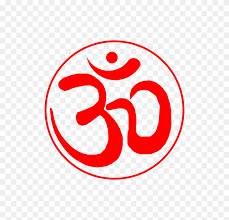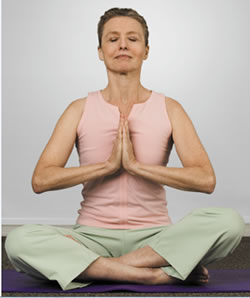
In setting up a meditation area for relaxation, or for use in yoga classes, many people use incense, candles and/or essential oils. Scent is a powerful and wonderful tool that can be used to fill a space or our bodies with qualities and symbolism to match the intentions or goals for any practice.
Sometimes, during Savasana (or corpse pose), one on the most relaxing parts of yoga practice where the body is completely relaxed, many instructors use scent in the room to aid in relaxation. My personal yoga instructor, for example, dabs a tiny drop of lavender oil on our necks during Savasana, Lavender has many properties to help soothe and relax,
So what kind of scents are available and what does one use? It really depends on what your goals are for that particular meditation or yoga session. Are you trying to relieve stress? Then you might use Lavender....Have you been fighting a cold? Then you might try Hyssop. Are you trying to gain energy and wake up? Then you might use Lemon or Peppermint.
Here is a list of some common essential oils and what they mean or what they can help achieve to get your started on your way to setting up the right mood or intention for your practice.
Lemon - Lemon is an energizer also helping as a disinfectant. It also has natural bleaching qualities. Along with that, it also serves as an energizer. The oil is extracted from the rind and juice of lemon and has a rich, fruity and warm scent.
Lavender - Lavender is a great stress reliever, promoting peace and well-being. Because of it's stress relieving ability and can be used to treat anxiety, insomnia and stomach aches. The oil is extracted from the flowering spikes of lavender and has a sweet, floral and slightly sharp scent. As mentioned earlier, this is a great scent for savasana,
Hyssop - Hyssop has been around for centuries. It has healing properties that have been used by many throughout the years. It helps with cold and flu. It can also be used as a skin-improving agent, helping fight against blemishes.
Jasmine - known for its relaxing and soothing properties and can be, at times, used as an aphrodisiac as well. The oil is extracted from jasmine flowers and has a heavy and sweet dreamy scent. (Another good option for savasana!)
Basil - Helps with concentration. Also used in a wide variety of problem such as upset stomach, headache, flatulence, low appetite, lack of concentration, abrasions, sinus, muscle aches, migraine, gout and bronchitis. The oil is extracted from flowering tops and leaves of basil and has a sweet and spicy scent.
Chamomile - Used to promote sleep, relaxation and meditation. (That's why so many people have a cup of chamomile tea at bedtime!) It's relaxation properties and can be used to treat indigestion, peptic ulcers, nervousness, menstrual cramps, sore throat, burns and skin inflammations, vaginal infections, insomnia, sunburn, hay fever and sprains. The oil is extracted from chamomile flower heads and has a sweet, fruity and floral scent.
Sandalwood - This scent is popular for incense burning and is still burned in many homes today. It is a very sweet woody scent helping promote relaxation and spiritual harmony. Also, help with dry hair and skin. It can also be used to treat depression, dry skin, nausea, skin problems and stress. The oil is extracted from sandalwood itself and has an exotic and slightly spicy scent.
Rose - There are many different types of roses. They all have some differences in healing properties. Rose oil has soothing and calming abilities and can be used to treat scurvy and nervousness. It also promotes the feelings of love and peace. The oil is extracted from petals, hips and root bark of rose and has a light, sweet and floral scent.
Peppermint - A true energizer. Often used to help with muscle aches, fatigue, pain, gas, sore throat, digestive problems, stomach ulcers and nausea. The oil is extracted from leaves of peppermint plant and has a minty scent.
Eucalyptus - Powerful decongestant. Used for centuries to help with cold symptoms. It also has antiseptic qualities and can be used to treat nasal and chest congestion, asthma, sore muscles, cuts and abrasions. The oil is extracted from eucalyptus leaves and has a strong, fresh and minty scent.
Ginger - An energizing scent, ginger is widely used to help with nausea.
Nutmeg - Used by some to help with sleep and indigestion.
But what if your intentions are specific? What can scent do to solidify your practice intentions? If you are in a troubled relationship and need to evoke positive feelings towards that relationship, you might initiate a meditation session surrounding love and focus on that to heal that relationship. In this case you would have several choices of scent to
aid in that intention.
Here are several themes and ways you can specifically gear your practice using scent:
Love, Companionship & Relationship
The scents of apple, cinnamon, clove, copal, gardenia, jasmine, lavender, musk, orange, patchouli, peppermint, rain, rose, vanilla, white jasmine, and ylang-ylang essential oil signify the different aspects of a relationship, such as love, companionship, affection and adoration.
Goals, Gains, Money & Success
The scents that signify material success, along with money, profits and aims, include the fragrance of allspice, almond, bergamot, basil, cinnamon, clover, dill, honeysuckle, lemon, pine, red ginger and sage essential oils.
Protection, Harmony & Well Being
Signifying the overall harmony of a person are the scents of angelica, basil, bay, bayberry, carnation, cinnamon, clove, coconut, dill, dragon's blood, eucalyptus, frankincense, gardenia, geranium, heather, juniper, lilac, myrrh, narcissis, sandalwood and violet essential oils.
Inspiration, Psychic Awareness & Intuition
If you are looking for essential oils with scents that signify inspiration, psychic awareness and intuition; anise, cedar, chamomile, cinnamon, eucalyptus, frankincense, green tea, lavender, lemongrass, lime, lotus, musk, myrrh, peppermint, pine, rosemary, sandalwood, and valerian essentials oils will be the best bet.
Chakras
Maybe your focus is to work on one of the seven Chakras that is of concern for you. The word Chakra is Sanskrit for wheel or disk. It signifies one of seven basic energy centers in the body which are the openings for life energy to flow into and out of our aura. Each of these centers correlates to major nerve within our spinal column. In addition, the Chakras also correlate to levels of consciousness, archetypal elements (Jungian concepts), developmental stages of life, colors, sounds, body functions, and more. Aromatherapy oils aimed at specific Chakras can be used in healing or working on those areas of concern during your meditation or yoga practices.


